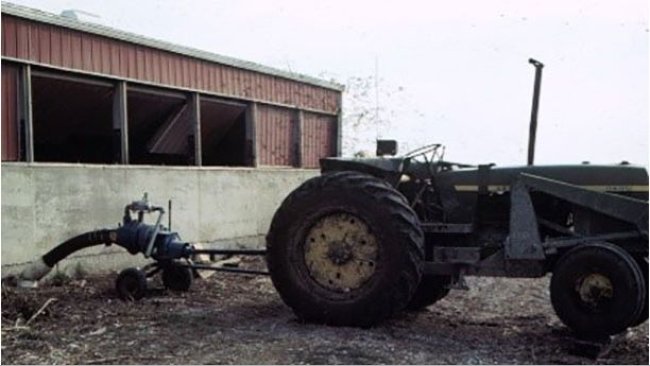
Sustainable pork production in the age of climate change
The pig industry needs to counteract concerns about climate change and provide evidence we are making efforts to minimize our environmental footprint.
The pig sector events all around the world
Weekly newsletter with all the pig333.com updates
Swine industry news in your email
Pig health: news and articles on PRRS, PCV2, biosecurity, etc, Pig disease guide, atlas of pathology, clinical cases…
Biocheck.UGent is an independent, risk-based, scientific scoring system for assessing the quality of your on-farm biosecurity.
A visual and practical step-by-step guide on how to perform a necropsy on a pig.
All the information about ASF: how to recognize the disease, how it is transmitted, pictures of lesions, latest news, guides, etc.
All the information on Foot and Mouth Disease in pigs: how to recognize the disease, how it is transmitted, images of lesions, latest news, guides,...
Description of the most important diseases and conditions in pigs
Images of major swine diseases
Pig disease diagnostic tool
Definition for the most commonly used pig terms
Simulator that calculates the amount of drug to add to the water when using a flow dispenser.
Weekly newsletter with all the pig333.com updates
Pig Prices by countries. Pork production and trade. News of the pig market and the raw materials
The latest slaughter pig prices in the most important pig markets. Check the evolution of the historical prices in charts and in several currencies.
Latest quotations for the main commodities used in pig feed. Historical graphs with the pig price and estimated feed price.
Figures & trends in pig numbers, pork production and pork trade.
Global production and trade data for the most important raw materials
Weekly newsletter with all the pig333.com updates
Articles on nutrition and pig feeding, characteristics of raw materials and additives for pig feed. Prices of raw materials
Latest quotations for the main commodities used in pig feed. Historical graphs with the pig price and estimated feed price.
Technical sheets of the main raw materials and additives used in swine feed. They include a comparison of nutritional values from various sources, product
Global production and trade data for the most important raw materials
Definition for the most commonly used pig terms
Use this tool to diagnose problems with the feed conversion ratio. Click on the flowchart or on the buttons within the text to navigate through the different parts of the tool.
A biweekly newsletter with the latest developments in swine nutrition
Articles on genetics and pig reproduction: genetic improvement, genomics, artificial insemination, use of hormones
Compare production data, calculate the number of sow, nursery, and finishing spaces, and visualize your tasks on the work schedule by type of BMS.
Tool that allows you to calculate the replacement rate in your farm
Definition for the most commonly used pig terms
Use this tool to find out why your farrowing rate is less than ideal. Click on the flowchart or on the buttons found within the text to navigate through the different parts of the tool.
Weekly newsletter with all the pig333.com updates
Management, pig farm management, work planning in each production stage: management in gestation, grow finish, batch farrowing
Compare production data, calculate the number of sow, nursery, and finishing spaces, and visualize your tasks on the work schedule by type of BMS.
Tool that allows you to calculate the replacement rate in your farm
Definition for the most commonly used pig terms
Weekly newsletter with all the pig333.com updates
Design of facilities and equipment for pig farms: building design, climate control, feeding systems, etc.
Biocheck.UGent is an independent, risk-based, scientific scoring system for assessing the quality of your on-farm biosecurity.
Environmental Footprint Calculator along the pork value chain.
Definition for the most commonly used pig terms
Simulator that calculates the amount of drug to add to the water when using a flow dispenser.
Use this tool to explore which slurry management strategy best fits your situation. Click on the flow chart or on the buttons within the text to navigate through the different parts of the tool.
Weekly newsletter with all the pig333.com updates
What makes us stand out is the quality and independence of our contents. Find out about the authors who make it possible. Our goal is to generate a virtual community of advanced users in the sector.

Dr. Donham earned a B.S in Premedical Sciences and a M.S. in Preventive Medicine and Environmental Health from the University of Iowa, and a Doctor of Veterinary Medicine degree from Iowa State University. He practiced veterinary medicine for several years before returning to the University of Iowa as a faculty member in 1973. He achieved the rank of full Professor in 1984.
At the University of Iowa, Dr. Donham developed an MS – PhD degree and Certificate program in Agricultural Safety and Health at the University of Iowa, the first and one of the few teaching programs today in agricultural medicine. The program focuses on specialty training for health care and occupational health professionals in health and safety issues in the farming community.
Dr. Donham's research has focused on occupational and environmental health concerns relative to intensive livestock housing, having conducted the original studies in this area beginning in 1974. In addition, he studies diseases of agricultural workers, particularly respiratory diseases, zoonotic infectious diseases, and intervention methods for prevention. He has published over 150 articles, four books, and numerous chapters in these areas. With co-author Anders Thelin of Sweden, he authored the first text book for the field, Agricultural Medicine: Occupational and Environmental Health for the Health Professions (Blackwell, 2006). A newer edition of that book was published as Agricultutral Medicine: Rural Occupational Health, Safety, and Prevention 0, Donham and Thelin, Wiley Blackwell, 2016.
Updated CV 23-Aug-2017

The pig industry needs to counteract concerns about climate change and provide evidence we are making efforts to minimize our environmental footprint.

Suicide in farmers is more than six times as high compared to all other workers. But stressful conditions do not have to end in suicide.

After reviewing some of the main hazards for pork producers in previous articles, this article is devoted to practical measures describing how to reduce risks of illnesses and injuries from those hazards.

Illness and injuries can cost serious economic, physical, and emotional health issues that can deter from an efficient and enjoyable production system and home life. In this article, I will list several categories of health and safety issues for workers.

By far, the most common and most obvious health hazard to producers and workers is accidental needle sticks. This article will focus on accidental needle sticks, what risks they present, and how to prevent them.

Liquid manure in deep anaerobic storage, contains sulfur (from amino acids in feed, manure or in water) which certain bacteria (anaerobes) use as a substitute for oxygen. They produce H2S as an end product, which is toxic to living tissue, by stopping the energy supplying reactions in the tissue cells.
Welcome to 333
Connect, share, and interact with the largest community of professionals in the swine industry.
Celebrating 196578Users on 333!
Sign upAlready a member?





